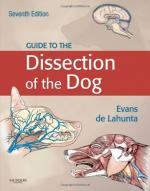|
This section contains 843 words (approx. 3 pages at 300 words per page) |

|
Dissection is the act of separating into parts or pieces. Dissection has been called "the way of discovery" in understanding human anatomy (form) and human physiology (function). Dissection of human and animal cadavers (dead bodies) has produced a vast pool of knowledge, not only of the gross anatomy (muscles, organs, skeletal structure and such), but has ultimately led to understanding the very essence of life at the molecular and genetic level of cells, genes, and DNA. Dissection was, and is, highly controversial. Human dissection was prohibited in ancient Greek and Roman religions and in many countries in the mid-twentieth century. By the turn of the twentieth century, animal dissection was still being strongly opposed by many individuals and organizations worldwide.
The first recorded human dissection was in the sixth century in the era of the Greek philosopher Alcmaeon (535-? B.C.). By 275 B.C., Herophilus of Chalcedon (335 B...
|
This section contains 843 words (approx. 3 pages at 300 words per page) |

|


